Abstract
STUDY OBJECTIVE--To elicit lay concepts of health and to see whether these are related to various sociodemographic factors, as has been suggested by previous smaller studies. DESIGN AND SETTING--A total of 196 people aged 18 and over were selected, as a representative sample of the general population, from the electoral registers of Walsall and Dudley in the West Midlands. Respondents were interviewed in their own homes in the autumn of 1989. MEASUREMENTS--Open ended and structured questions were used to elicit concepts of health. The three main stages consisted of an unprompted section in which respondents were asked to describe the features of good or poor health in themselves or others; a prompted section in which they were asked to rate 37 health statements using a series of categories from "very important" to "not at all important"; and a section in which they were asked to indicate which of six groups of statements, each representing a particular concept of health, best represented their own notions of health. RESULTS--Health was seen as multidimensional. Irrespective of whether respondents addressed health in self or health in others, or good or poor health, the biomedical dimension remained an important one. The manner by which concepts of health are elicited may provide some explanation as to why so many and varied concepts are alleged to be held by different subgroups of the population (notably different social classes). CONCLUSIONS--The differences found in this study between models of health employed by different subgroups of the general population have not been as great as has previously been suggested in the published reports. This is encouraging for those using existing health status measurements.
Full text
PDF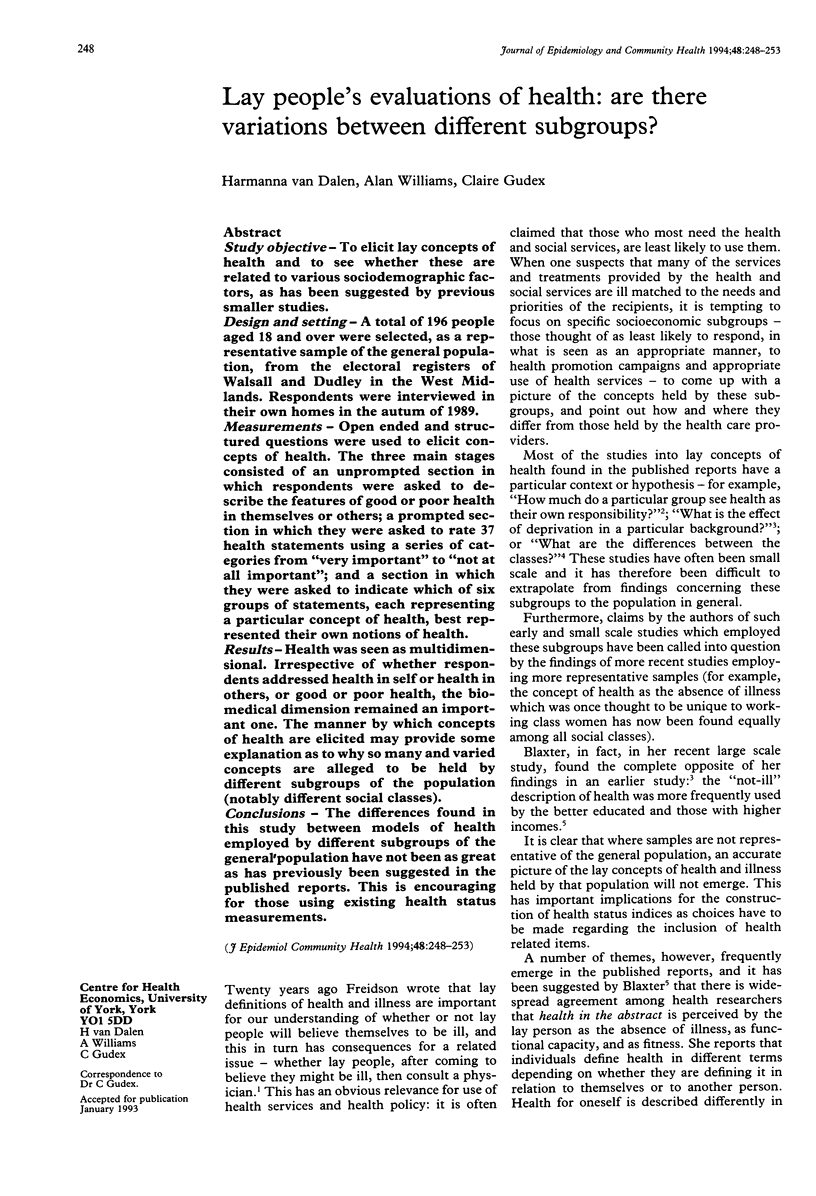
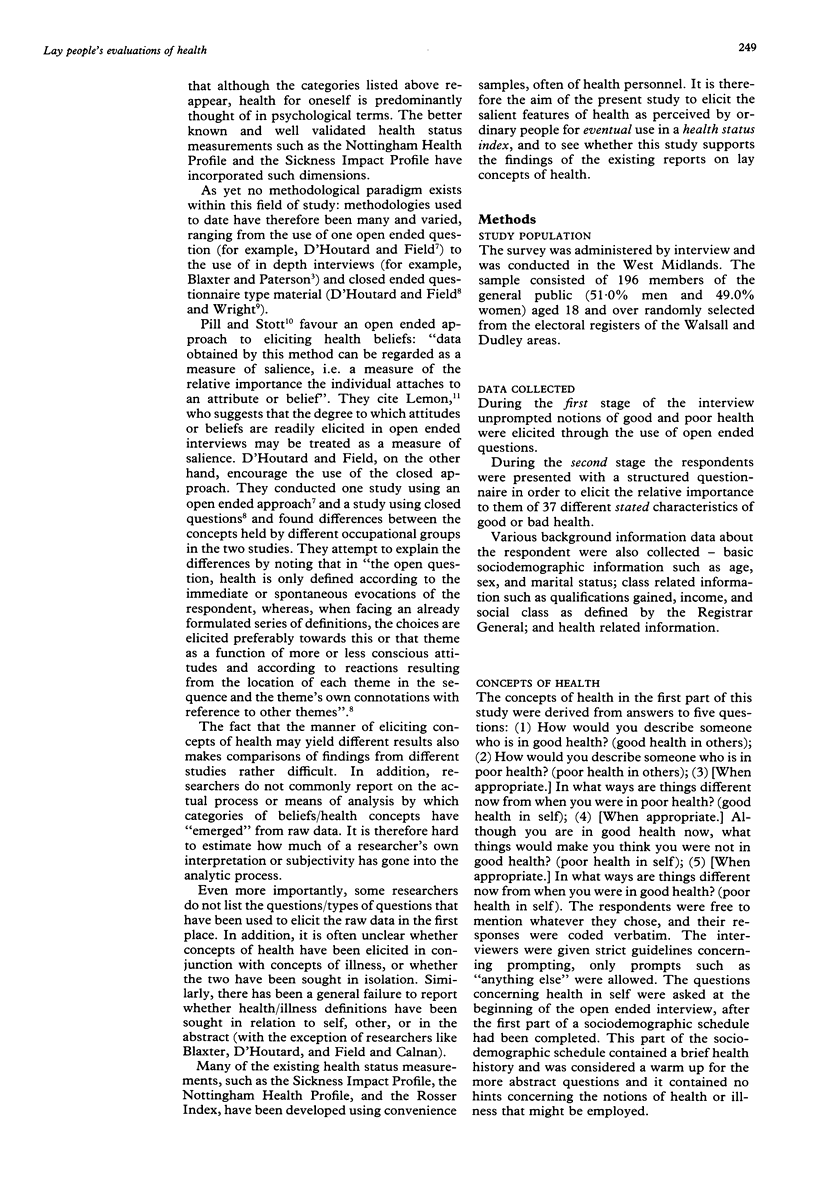
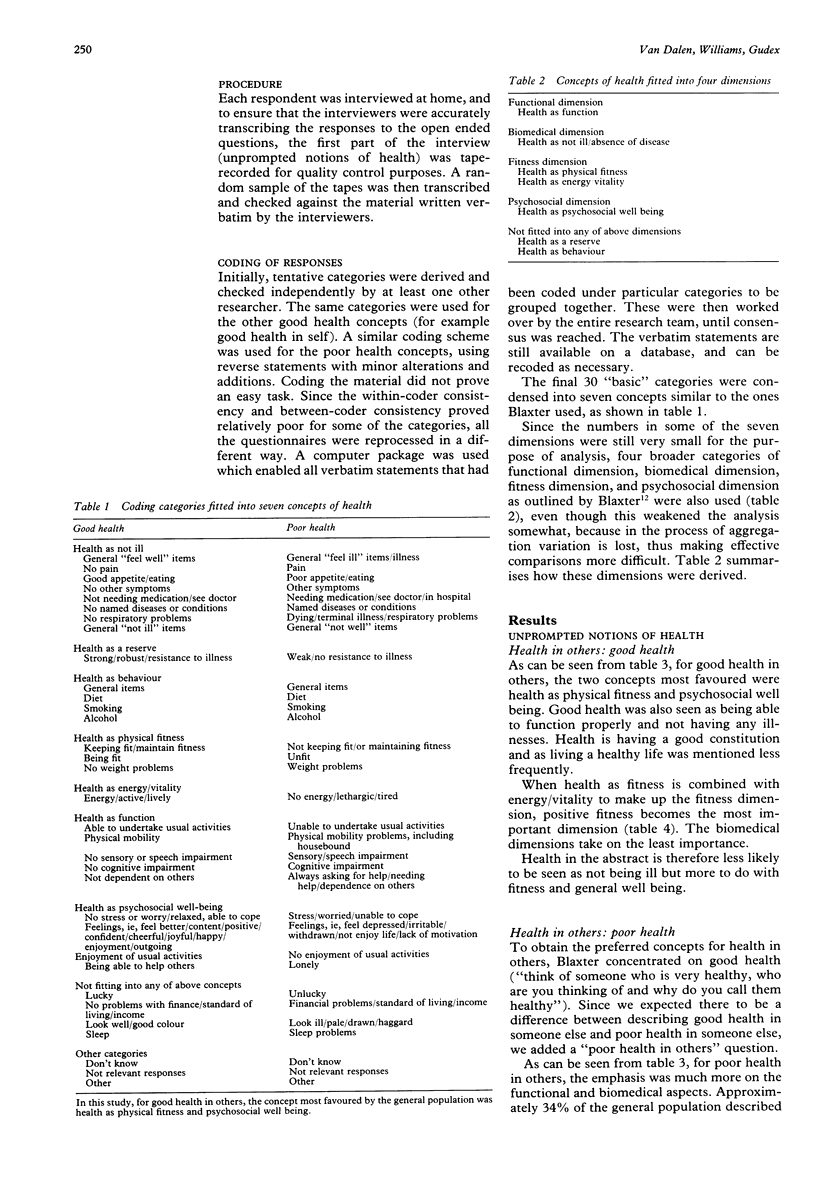
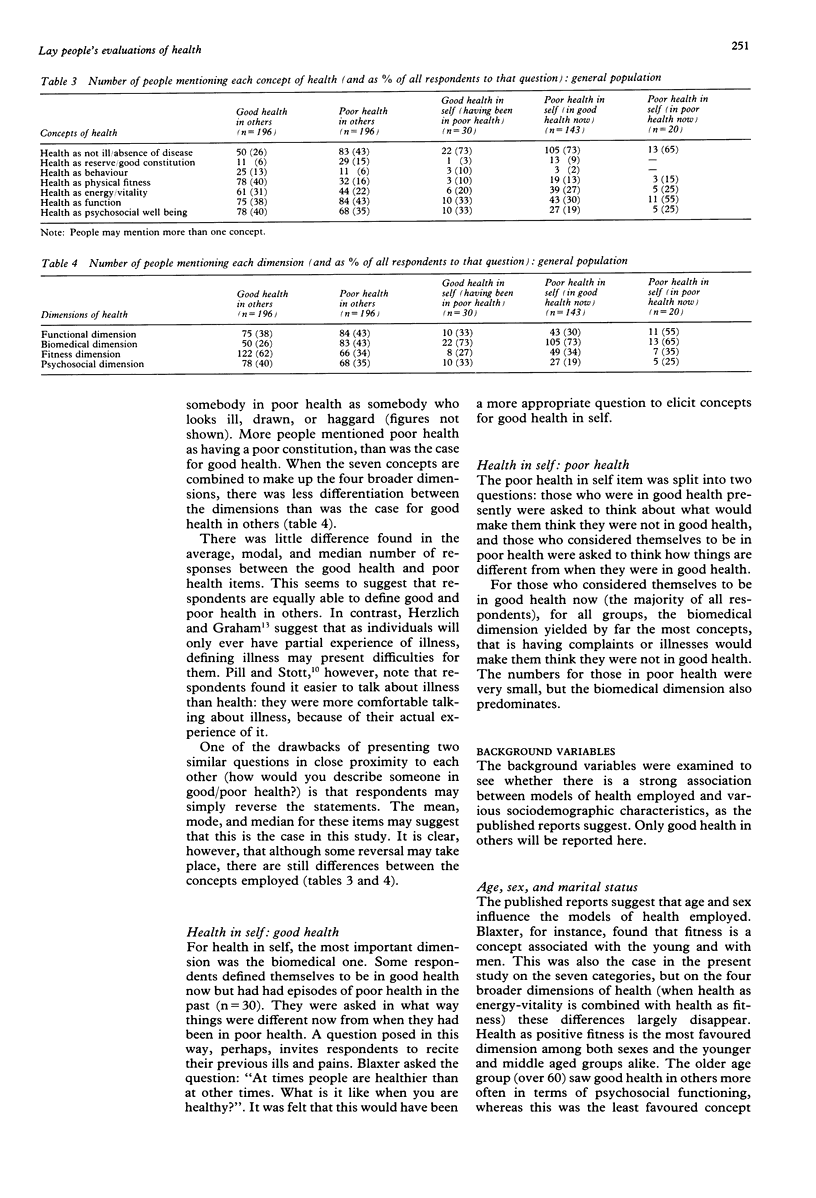
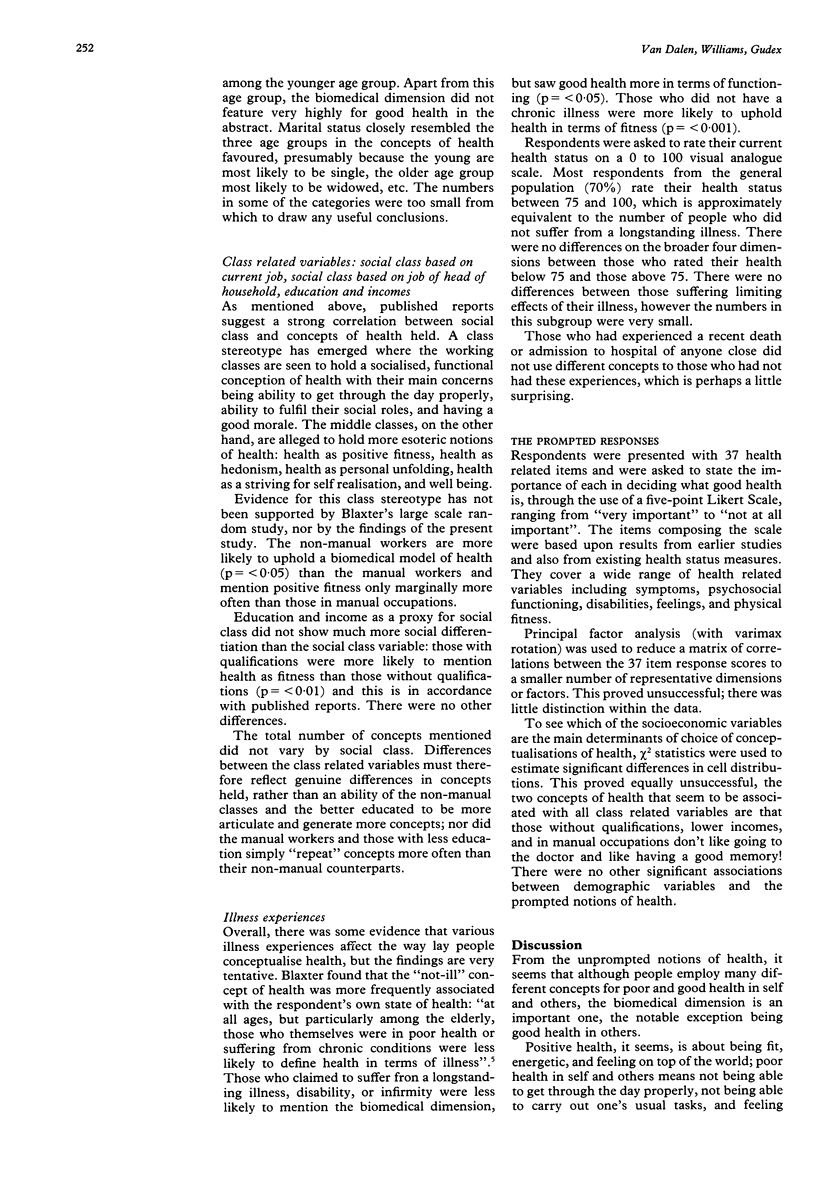
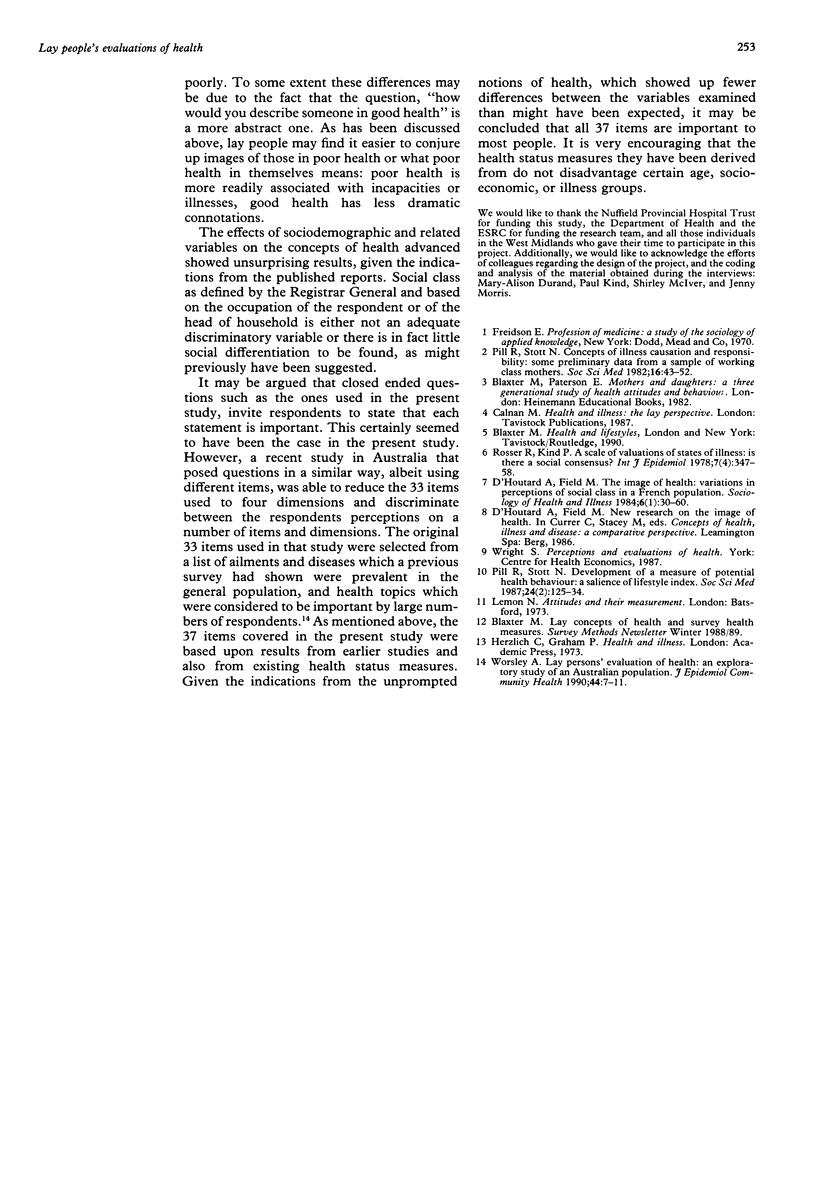
Selected References
These references are in PubMed. This may not be the complete list of references from this article.
- Pill R., Stott N. C. Concepts of illness causation and responsibility: some preliminary data from a sample of working class mothers. Soc Sci Med. 1982;16(1):43–52. doi: 10.1016/0277-9536(82)90422-1. [DOI] [PubMed] [Google Scholar]
- Pill R., Stott N. C. Development of a measure of potential health behaviour: a salience of lifestyle index. Soc Sci Med. 1987;24(2):125–134. doi: 10.1016/0277-9536(87)90245-0. [DOI] [PubMed] [Google Scholar]
- Rosser R., Kind P. A scale of valuations of states of illness: is there a social consensus? Int J Epidemiol. 1978 Dec;7(4):347–358. doi: 10.1093/ije/7.4.347. [DOI] [PubMed] [Google Scholar]
- Worsley A. Laypersons' evaluation of health: an exploratory study of an Australian population. J Epidemiol Community Health. 1990 Mar;44(1):7–11. doi: 10.1136/jech.44.1.7. [DOI] [PMC free article] [PubMed] [Google Scholar]


